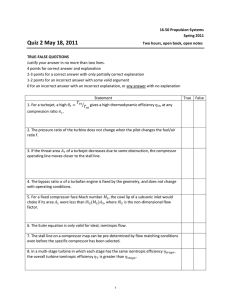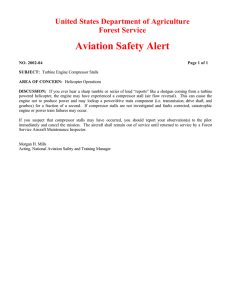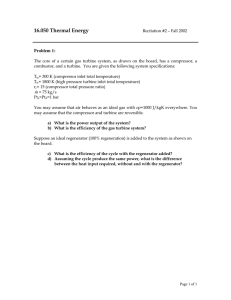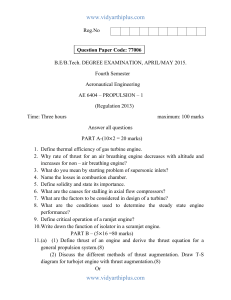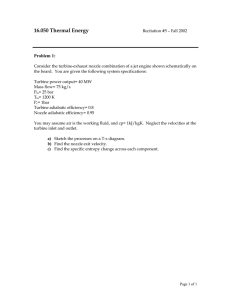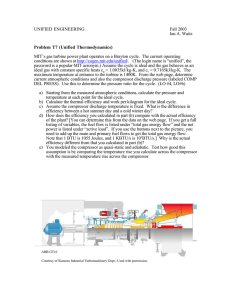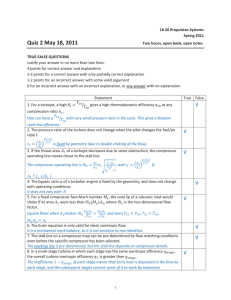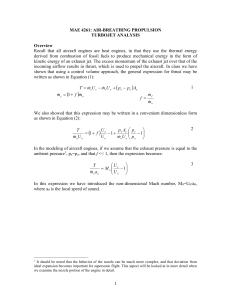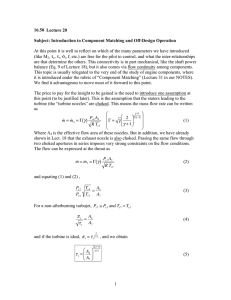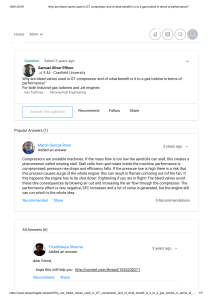Document 13482010
advertisement
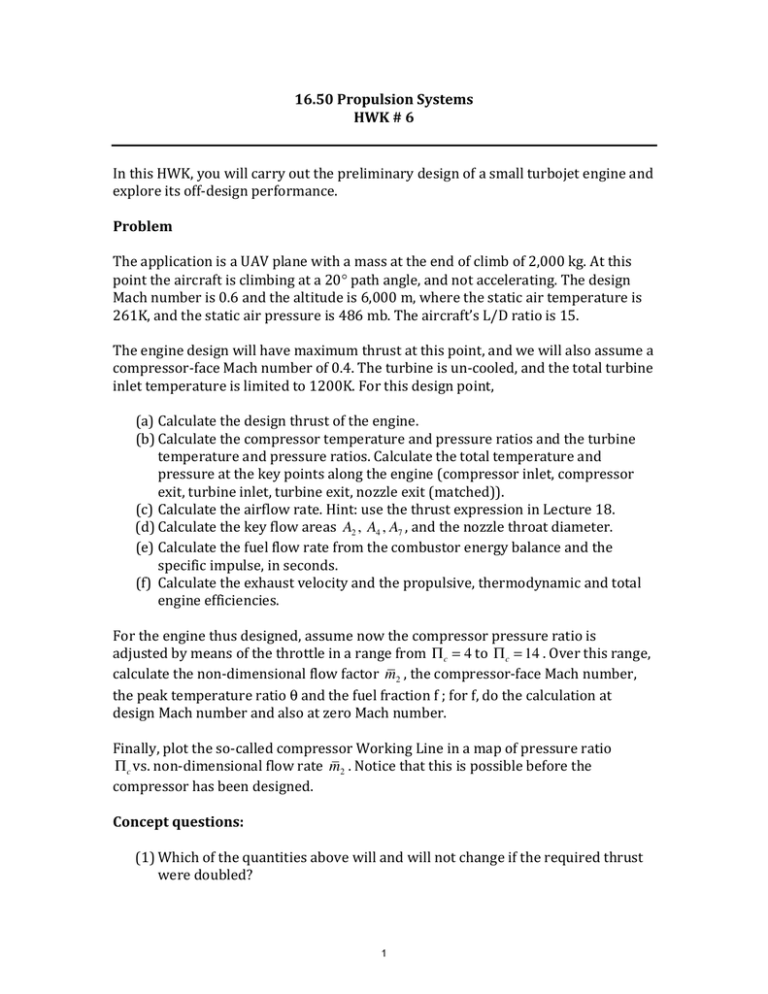
16.50 Propulsion Systems HWK # 6 In this HWK, you will carry out the preliminary design of a small turbojet engine and explore its off-­‐design performance. Problem The application is a UAV plane with a mass at the end of climb of 2,000 kg. At this point the aircraft is climbing at a 20° path angle, and not accelerating. The design Mach number is 0.6 and the altitude is 6,000 m, where the static air temperature is 261K, and the static air pressure is 486 mb. The aircraft’s L/D ratio is 15. The engine design will have maximum thrust at this point, and we will also assume a compressor-­‐face Mach number of 0.4. The turbine is un-­‐cooled, and the total turbine inlet temperature is limited to 1200K. For this design point, (a) Calculate the design thrust of the engine. (b) Calculate the compressor temperature and pressure ratios and the turbine temperature and pressure ratios. Calculate the total temperature and pressure at the key points along the engine (compressor inlet, compressor exit, turbine inlet, turbine exit, nozzle exit (matched)). (c) Calculate the airflow rate. Hint: use the thrust expression in Lecture 18. (d) Calculate the key flow areas A2 , A4 , A7 , and the nozzle throat diameter. (e) Calculate the fuel flow rate from the combustor energy balance and the specific impulse, in seconds. (f) Calculate the exhaust velocity and the propulsive, thermodynamic and total engine efficiencies. For the engine thus designed, assume now the compressor pressure ratio is adjusted by means of the throttle in a range from !c = 4 to !c = 14 . Over this range, calculate the non-­‐dimensional flow factor m2 , the compressor-­‐face Mach number, the peak temperature ratio θ and the fuel fraction f ; for f, do the calculation at design Mach number and also at zero Mach number. Finally, plot the so-­‐called compressor Working Line in a map of pressure ratio !c vs. non-­‐dimensional flow rate m2 . Notice that this is possible before the compressor has been designed. Concept questions: (1) Which of the quantities above will and will not change if the required thrust were doubled? 1 (2) For the nominal thrust used in the Problem, how would things change if the turbine temperature could be raised to 1500K? No need to re-­‐do all the calculations, although you can if you prefer. Qualitative considerations and trends are sufficient. 2 MIT OpenCourseWare http://ocw.mit.edu 16.50 Introduction to Propulsion Systems Spring 2012 For information about citing these materials or our Terms of Use, visit: http://ocw.mit.edu/terms.
